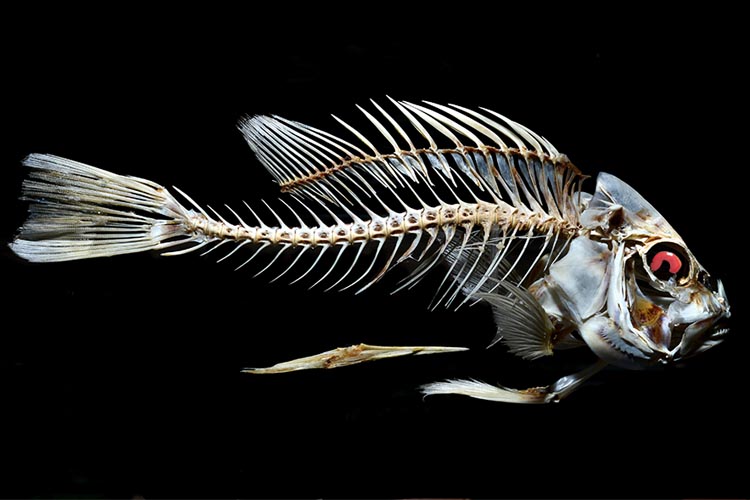
By Bram ‘Crowley’ Stoker
There are plenty of weird and scary, strange-looking fish and critters underwater that – even if they’re perfectly harmless – most people wouldn’t want to meet, especially on a night dive, when you’ve become separated from your buddy, and the battery in your flashlight is failing fast, and the ice-cold shiver down your spine is more than just a leaky neck seal…
Hallowe’en has once more risen, so here are some of the weirdest and scariest underwater creatures that you might not want to go ‘bump’ in the night dive.
Deep sea anglerfish
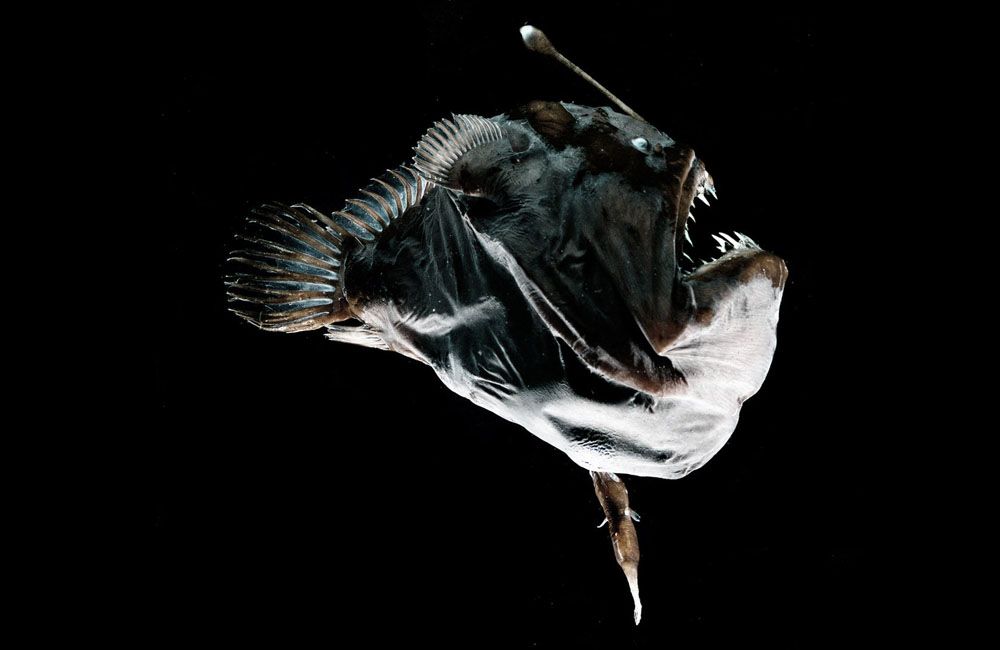
The term ‘anglerfish’ covers a number of different species, all of which have one thing in common: a bioluminescent lure that they can swing from the top of their heads to attract their prey, before sinking in a set of gnashers that would impress even Dracula.
The humpback black devil anglerfish pictured above is definitely one of those cases of a creature having a face that ‘only a mother could love’, and well – it would have to be a mother, because mates are hard to find in the inky blackness of the deep sea.
In fact, so difficult is deep-sea dating that the females of some anglerfish species form a very close, lifelong bond with the males. So terribly, terribly close that the male’s head is permanently fused into the female’s body, effectively turning him into a portable sack of nuts.
Who said romance was dead?
Blobfish
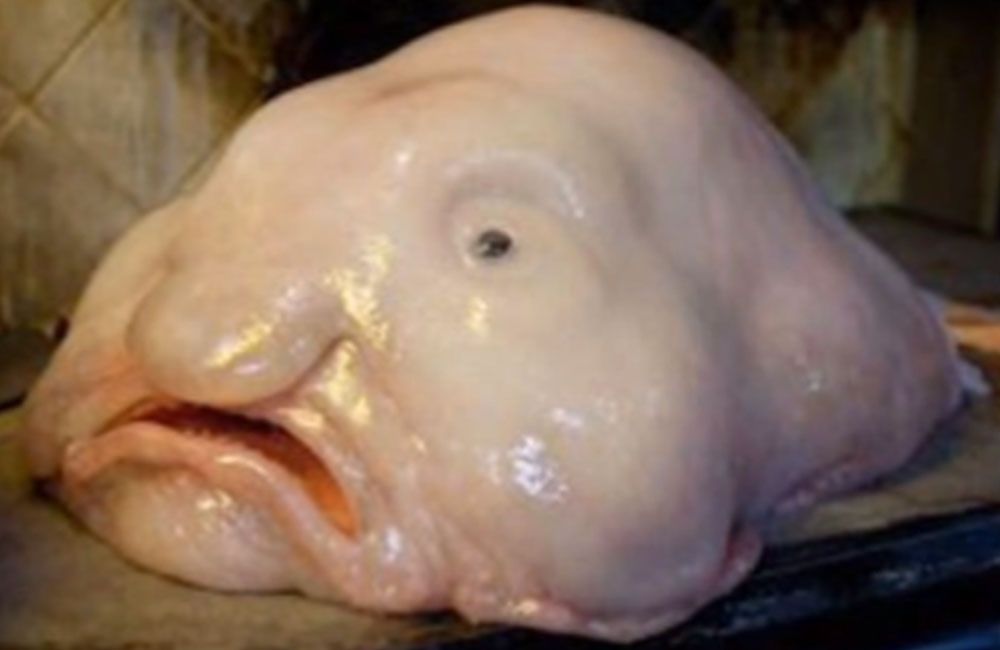
Not so much a very scary fish as it is a very ugly fish. Whoever gave the blobfish its name was perhaps a little bit lazy, possibly a little bit mean, but definitely scientifically accurate.
Psychrolutes marcidus lives between 600-1,200m near the seafloor where, to be fair, they look a lot less blobby than they do at the surface, thanks to the effects of deep-sea pressure which keeps them in a more appropriate (but hardly very pretty) fish-shape.
They never visit the surface (with a face like that, who would?), but they are sometimes accidentally brought up as bycatch where their gelatinous bodies can’t cope with gravity, and tend to sag a bit.
Voted ‘World’s Ugliest Animal’ in 2013.
Frilled shark
The very strange-looking frilled shark (Chlamydoselachus anguineus) is one of the oldest surviving species of shark in the water – and therefore among the oldest animals to have ever inhabited the planet.
Some estimates date the frilled shark to around 150 million years, which is twice as old as the last living dinosaur (that we know of), and 149.9 million years older than humans.
The frilled shark is found from the poles to the Equator in both the Atlantic and the Pacific, and while it definitely looks weird and just a wee bit scary, it is not thought to be at all dangerous.
Giant isopod

Looking for all the world like a giant woodlouse, but orders of magnitude nastier, giant isopods are a group of crustaceans comprised of at least 20 individual species.
Evil in appearance if not by nature, they thrive in cold, deep water, and range in size from 5cm and upwards. The largest model, Bathynomus giganteus (pictured above), can reach up to 76cm in length and weighs in at close to 2kg.
Just for your information, by the way, woodlice – like B. giganticus – are also crustaceans, meaning both are related to shrimp, crabs and other underwater shelled creatures.
Now that you know this, you’ll never unsee the picture above, and an image of the giant isopod and its little woodlouse pal will pop into your head every time you order a prawn cocktail, chuck another shrimp on the barbie, or crack into a lobster.
Forever.
Goblin shark
The weird-looking goblin shark was discovered near Yokohama, Japan, and takes its common name from the Japanese word tenguzame, a creature of Japanese mythology similar to the goblins of western mythology and – well – because it looks like a goblin.
Mitsukurina owstoni is, like the frilled shark, one of the oldest living species of fish in the water, coming in at around 125 million years old.
The elongated ‘nose’ gives it a fairly evil appearance, and at up to 3m long it’s probably best not to encounter one while night diving, as the diver in the movie above discovered when one lunged in for a quick nibble.
The jaws extend considerably when it feeds, adding to the rather scary, nightmarish look.
The Bobbit worm

The Bobbit worm is a species of polychaete worm found in tropical waters in the Asia Pacific region. It has a Caribbean counterpart relative known as ‘The Thing’ (Eunice rousseai), which is sometimes spotted around the islands of Curaçao, Bonaire and St Lucia.
They say a picture tells a thousand words but what the picture above doesn’t tell is the story of the thousand legs. Bobbit worms look for all the world like giant centipedes but can reach more than 2m in length and have infinitely more appendages.
The Bobbit worm’s revolting appearance takes its name from the revolting tale of John and Lorena Bobbitt, the latter of whom chopped off the former’s privates – a possible reference to the worm’s scissor-like jaws, which are also capable of separating much-needed appendages from their owners.
Almost as strange as the Bobbit worm’s weird appearance is its scientific name: Eunice aphroditois. Given that Aphrodite is the goddess of love, it seems likely that whoever named it might have drunk a bit too much of the pumpkin-spiced wine.
Dragonfish
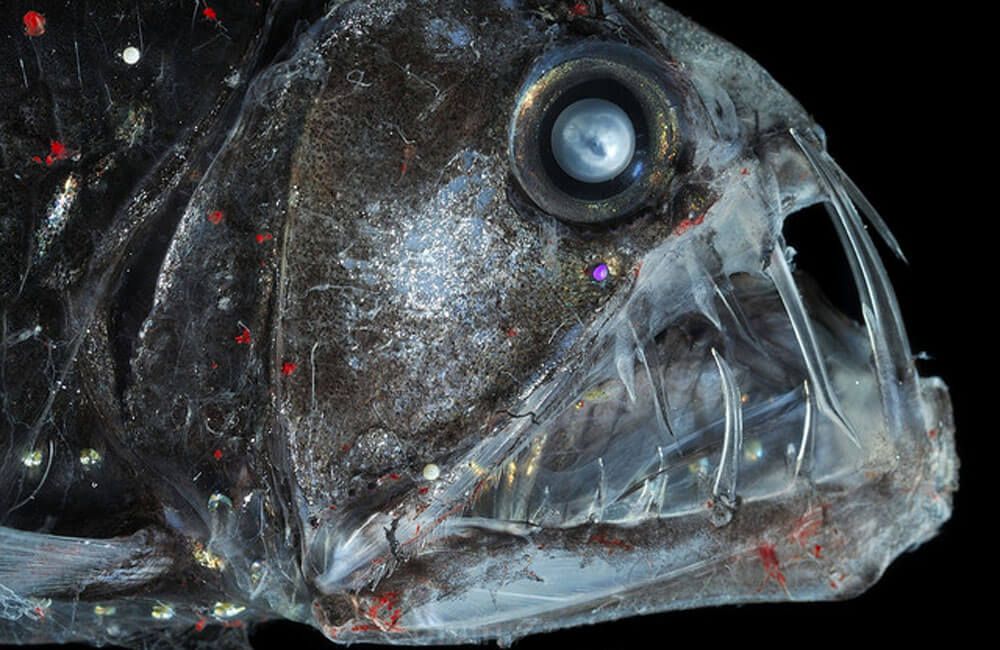
A fish as deserving of its name as it would be had it been given a starring role in an underwater version of Game of Thrones. Dragonfish are a group of aggressive deep-sea predators, and they are very weird and very scary-looking.
Sloane’s viperfish (Chauliodus sloani, pictured above) is the current world record holder for tooth-to-body size of any living fish known to science. Its teeth are so large that the fish is unable to properly close its mouth.
Viperfish hunts by opening its jaws and rushing at its prey, impaling its dinner in much the same way as any decent horror movie hero drives a stake through the undead.
Fortunately, it lives very deep in the ocean and only grows to around 30cm – but one bite is all it takes…
Wolf eel
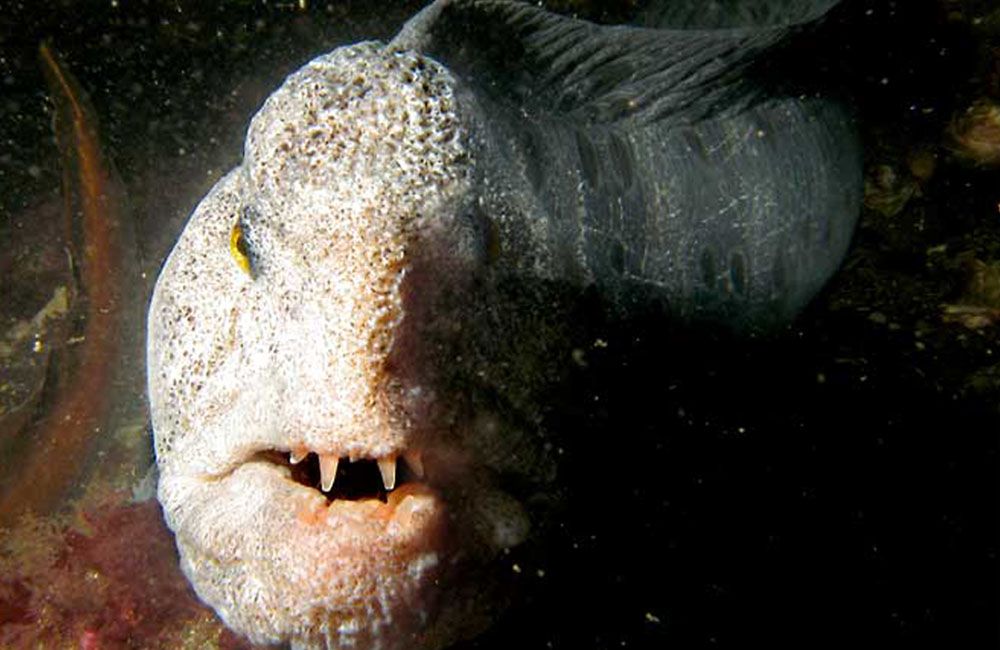
Wolves look graceful, powerful, beautiful and majestic. Wolf eels do not.
Growing to around 2.5m in length, Anarrhichthys ocellatus is mostly harmless to humans, although like the more common moray eels, if you poke around in its den, you’re going to lose whatever you’re poking with.
Residents of the cooler waters of the North Pacific, wolf eels often mate for life, take up residence in a small cave and take turns guarding their eggs as the other adult goes foraging for crustaceans and shellfish.
Rather a family-oriented sort of fish, really, and not at all scary. Just comes up a little short in the department of fairer features.
Vampire squid
No round-up of Hallowe’en-themed weird and scary-looking aquatic life would be complete without the vampire squid.
Unlike other species that sound dangerous but have deceptively boring scientific names, Vampyroteuthis infernalis quite literally translates as ‘the vampire squid from hell’.
The name might be a little undeserved, however, as it doesn’t have fangs, the spines on the underside of its tentacles are harmless and it doesn’t suck blood.
Possibly whoever named it had been up a little late reading Bram Stoker novels with a tad too much absinthe.
A nightmare on YOUR street
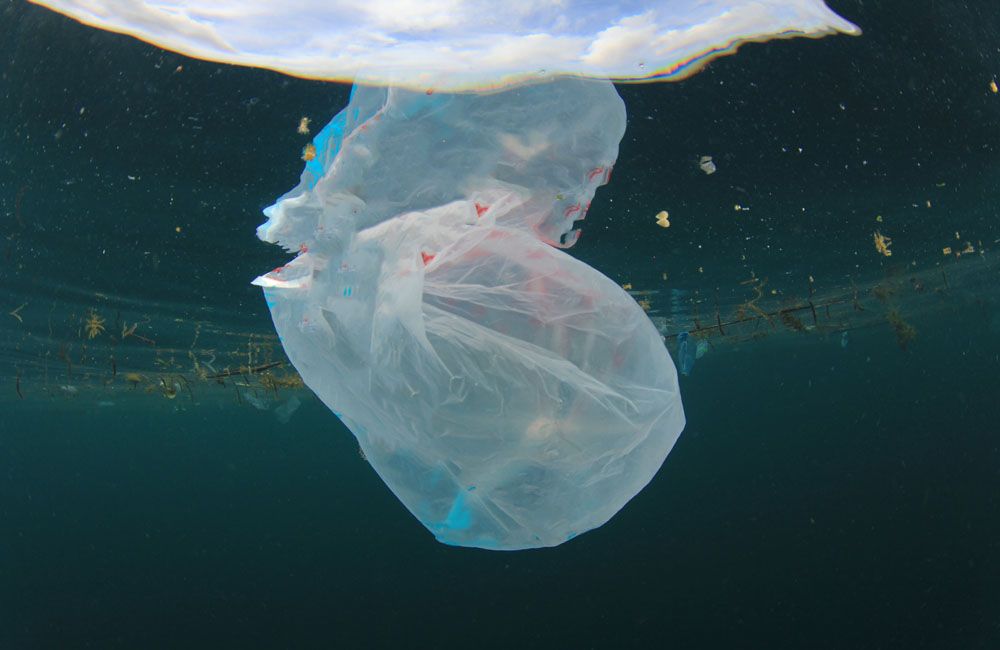
If there was one thing that human beings should fear most about our oceans today, it’s not toothy, bitey, scary fish or weird and ugly monsters, even though – seriously – after the isopod you’re never going to look at a prawn cocktail the same way again.
No, if there’s one thing to be afraid of, it’s not the creatures that are living under the waves, it’s the monstrous creation that is killing them en masse. Plastic in our seas has become a nightmare of epic proportions, and the results of its presence would turn the stomachs of even the hardiest of bloodthirsty horror movie fanatics.
Hallowe’en probably started out somewhere in our distant past as a ritual to appease the souls of the dead, drive out evil spirits and set the world to rights before winter set in.
It would seem that’s as good a reason as any to start thinking more carefully about our use of plastic, and what we do with it afterwards.
Enjoy the evening, don’t let the trick-or-treaters rob you blind (or egg your car), recycle the sweet wrappers and the costume packaging and then perhaps we can start to set the world to rights. Again.
More great reads with weird and scary creatures
- DIVE’s Biggest Shots of 2025 - 1 December 2025
- Mantas and devil rays receive maximum CITES protection - 28 November 2025
- Oceanic whitetips uplisted to CITES Appendix I - 27 November 2025


